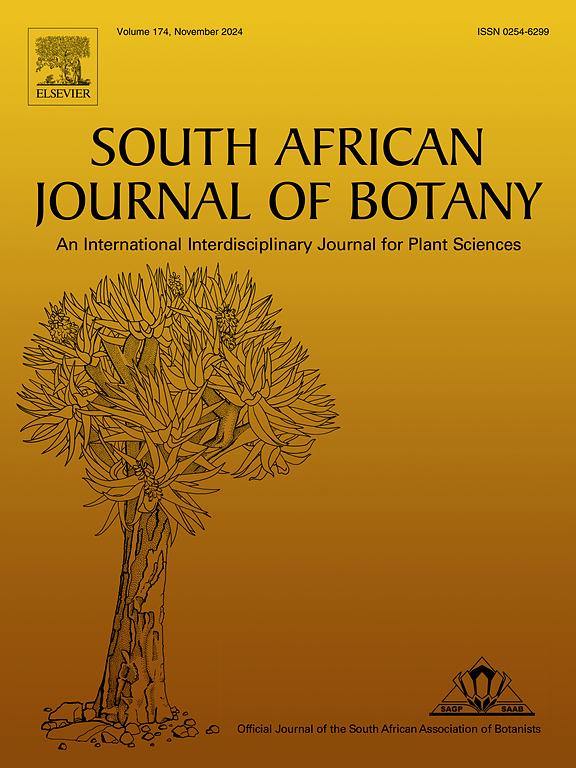Methyl jasmonate elicitation improved growth, antioxidant enzymes, and artemisinin content in in vitro callus cultures of Artemisia maritima L.
IF 2.7
3区 生物学
Q2 PLANT SCIENCES
引用次数: 0
Abstract
In this study, callus cultures of Artemisia maritima L. were established through optimization of culture conditions and subsequently elicited with methyl jasmonate (MeJA) to test for enhanced artemisinin production. The callus was cultured on Murashige and Skoog (MS) medium supplemented with 1.0 mg L−1 kinetin (KN) and 1.0 mg L−1 naphthaleneacetic acid (NAA). MeJA at concentrations of 0, 50, 75, and 100 µM was employed as an abiotic elicitor to enhance artemisinin content in in vitro-derived callus cultures. The elicitor-mediated changes in callus growth, biochemical parameters, antioxidant enzymes, and artemisinin content were evaluated. Maximum callus proliferation was obtained on stem explant fortified with KN and NAA (each 1.0 mg L−1) yielding 4.095 g of callus biomass after 4 weeks of inoculation. Antioxidant enzymes (catalase, superoxide dismutase, and ascorbate peroxidase) activity increased with increasing MeJA concentration and duration of elicitation and was found to maximum at 100 µM after 21 days of elicitation. . The artemisinin content was quantified in callus cultures by HPTLC and later validated by LCMS analysis. Artemisinin content depicted a significant enhancement in all tested cultures elicited with MeJA, as compared to non-elicited (control) and wild-grown plant. The artemisinin content increased with increasing MeJA treatments and was maximum (780.36 ng g−1 d.w.) in MeJA (100 µM) treated cultures as revealed by HPTLC. The study suggests MeJA elicitation as an effective strategy to expedite the production of artemisinin in in vitro cultures of A. maritima, an under-utilized species.

求助全文
约1分钟内获得全文
求助全文
来源期刊

South African Journal of Botany
生物-植物科学
CiteScore
5.20
自引率
9.70%
发文量
709
审稿时长
61 days
期刊介绍:
The South African Journal of Botany publishes original papers that deal with the classification, biodiversity, morphology, physiology, molecular biology, ecology, biotechnology, ethnobotany and other botanically related aspects of species that are of importance to southern Africa. Manuscripts dealing with significant new findings on other species of the world and general botanical principles will also be considered and are encouraged.
 求助内容:
求助内容: 应助结果提醒方式:
应助结果提醒方式:


